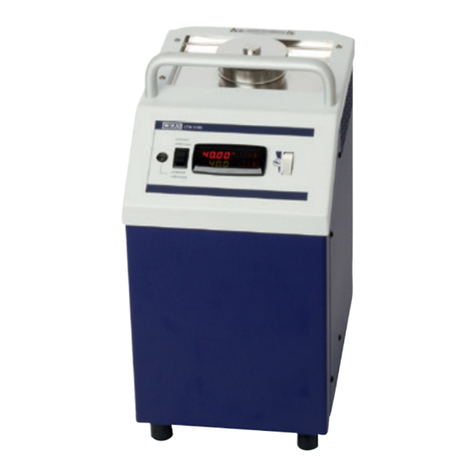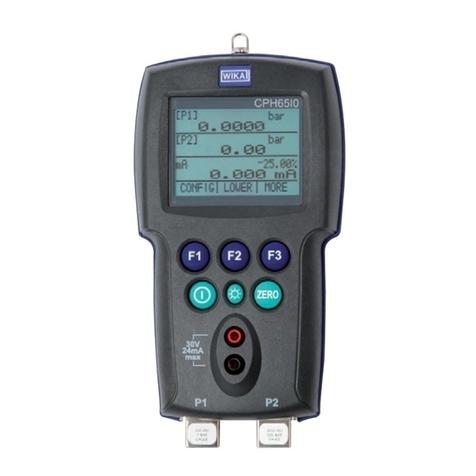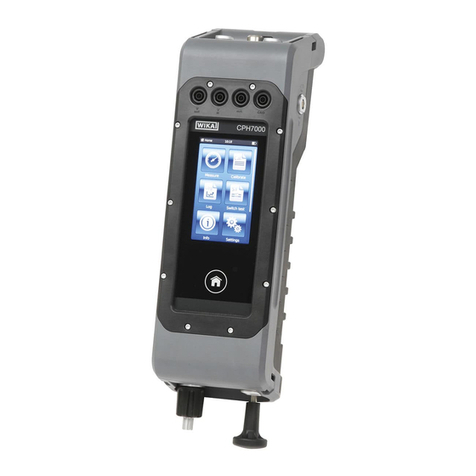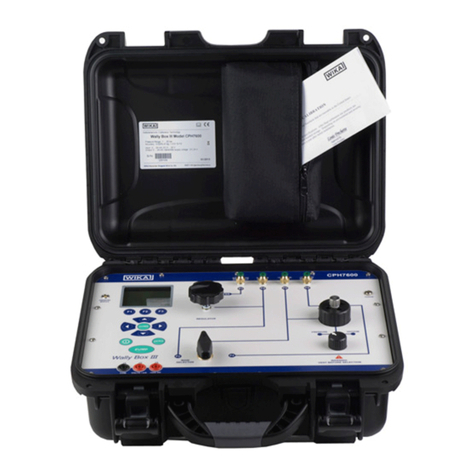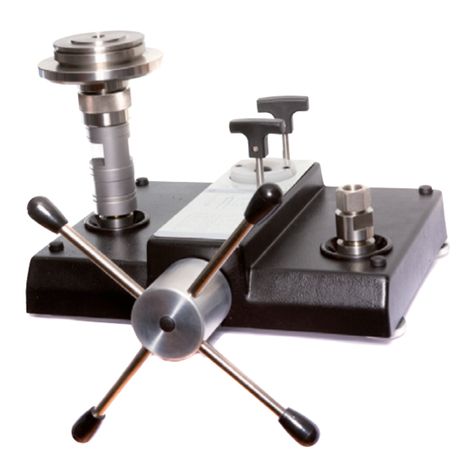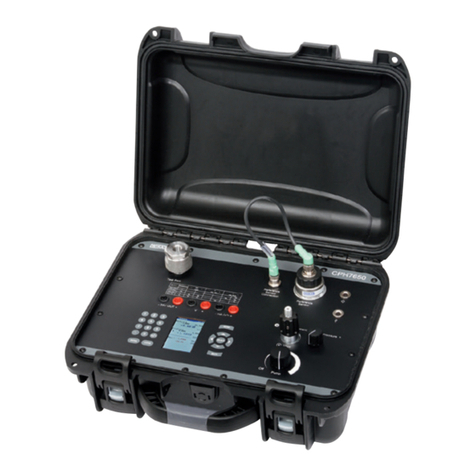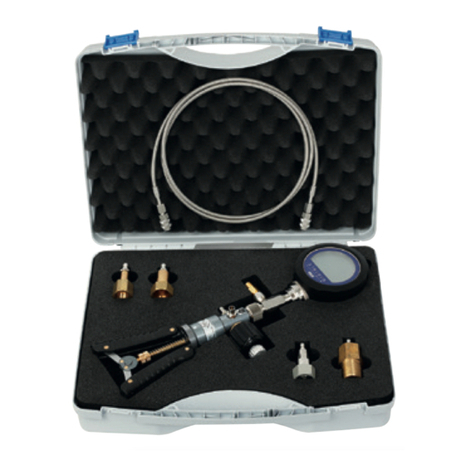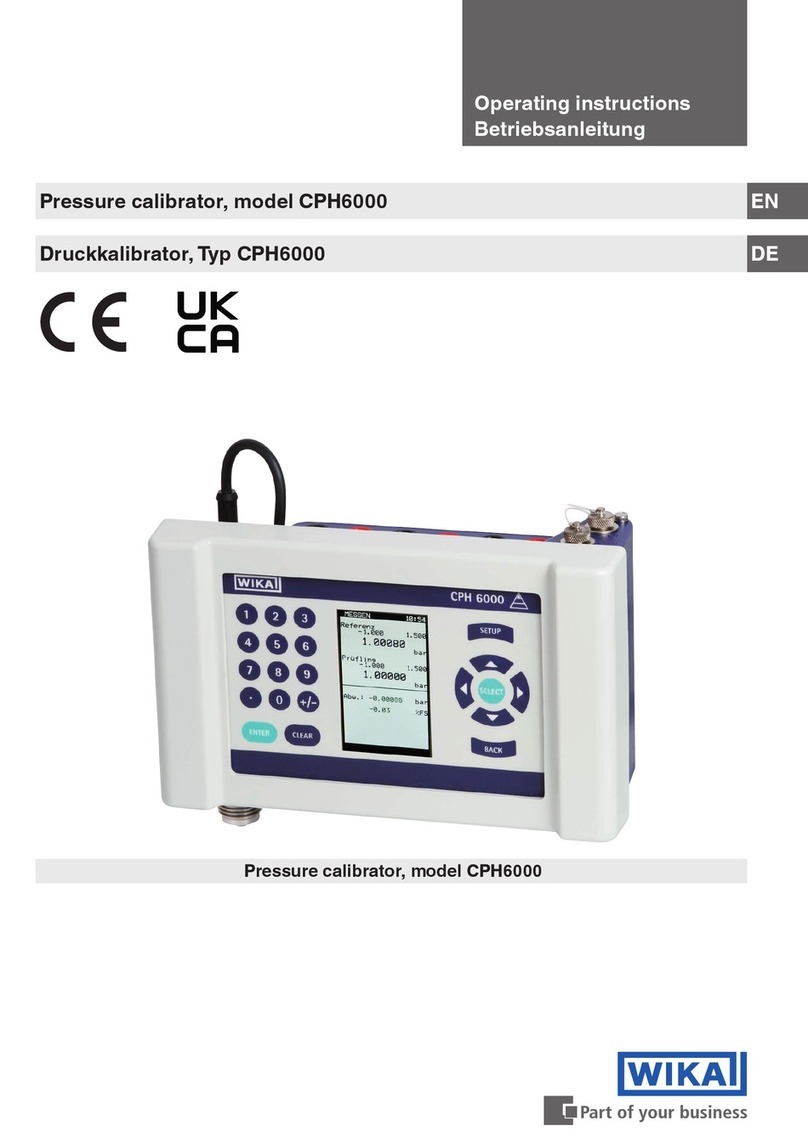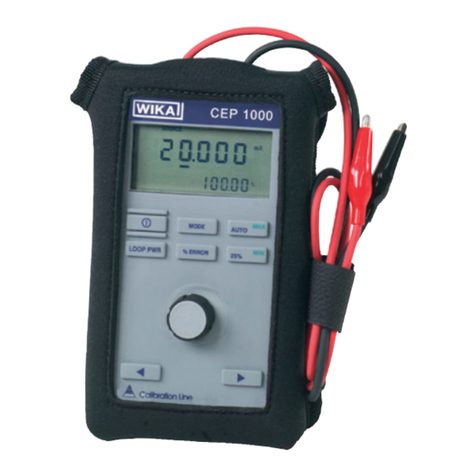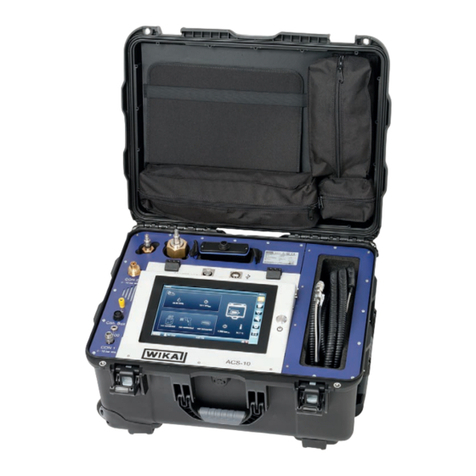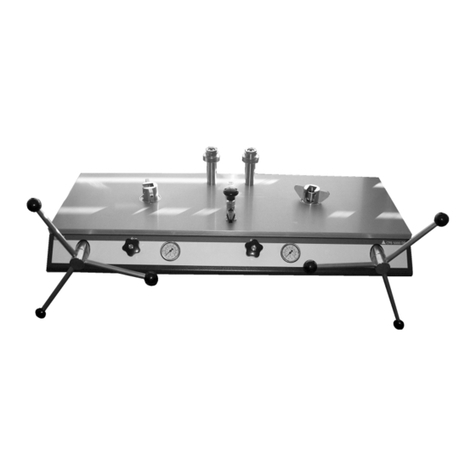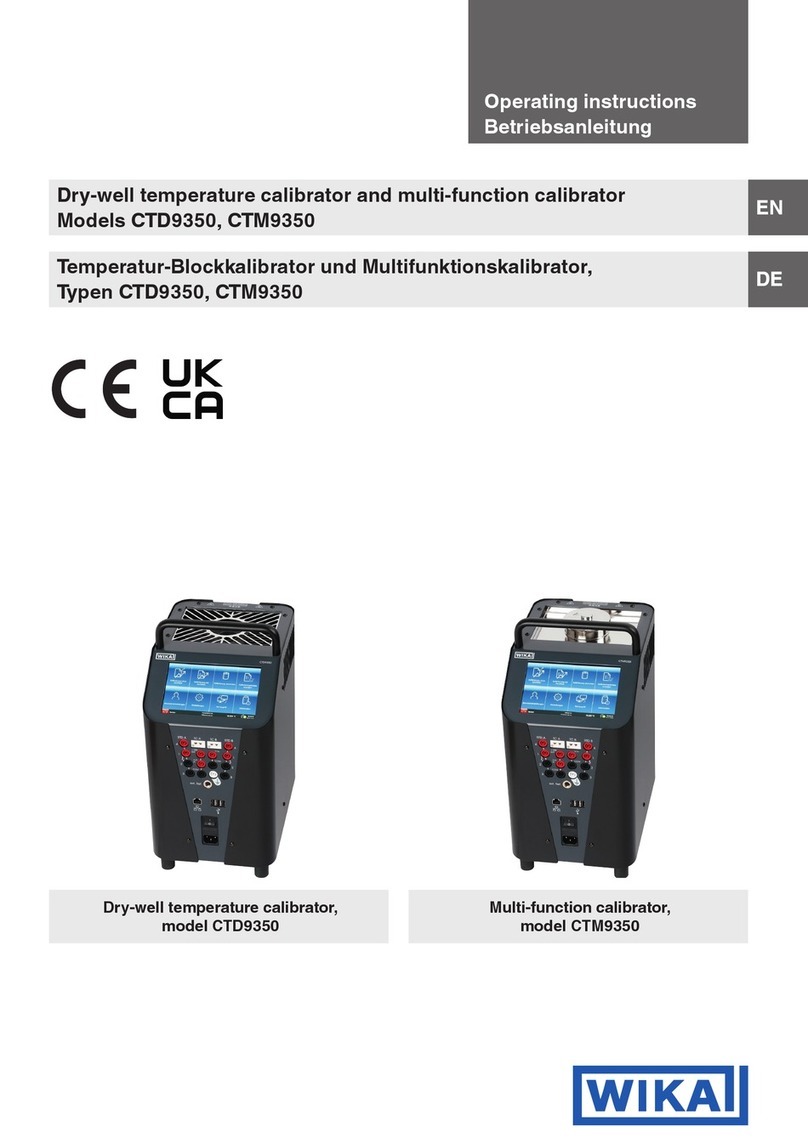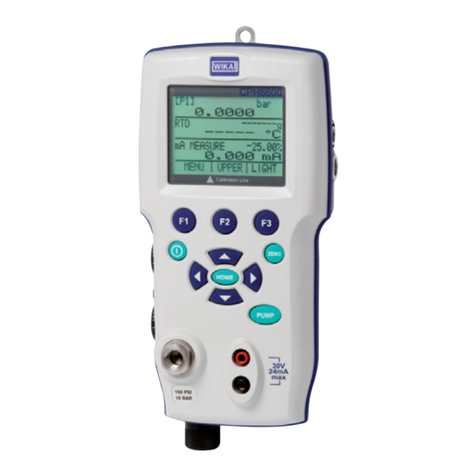Contents
Declarations of conformity can be found online at www.wika.com.
6.3 Cursor control/set point control . . . . . . . . . . . . . . . . . . . . . . . . . 22
6.4 Using the measuring modes (lower display) . . . . . . . . . . . . . . . . . . 22
6.4.1 Measuring voltage and frequency. . . . . . . . . . . . . . . . . . . . .22
6.4.2 Measuring current (mA) . . . . . . . . . . . . . . . . . . . . . . . . . . 23
6.4.3 Measuring temperature . . . . . . . . . . . . . . . . . . . . . . . . . . 23
6.4.4 Measuring pressure . . . . . . . . . . . . . . . . . . . . . . . . . . . . 25
6.5 Using the output modes (lower display). . . . . . . . . . . . . . . . . . . . .27
6.5.1 Setting the output parameters 0 % and 100 %. . . . . . . . . . . . . .27
6.5.2 Using the automatic output functions . . . . . . . . . . . . . . . . . . .28
6.5.3 Current output . . . . . . . . . . . . . . . . . . . . . . . . . . . . . . . 28
6.5.4 Simulating a transmitter . . . . . . . . . . . . . . . . . . . . . . . . . . 30
6.5.5 Voltage output . . . . . . . . . . . . . . . . . . . . . . . . . . . . . . . 30
6.5.6 Frequency output. . . . . . . . . . . . . . . . . . . . . . . . . . . . . .31
6.5.7 Pulse output . . . . . . . . . . . . . . . . . . . . . . . . . . . . . . . . 31
6.5.8 Simulating thermocouples . . . . . . . . . . . . . . . . . . . . . . . . .31
6.5.9 Simulating resistance or resistance thermometers . . . . . . . . . . . 32
6.6 Using the isolated measuring modes (upper display) . . . . . . . . . . . . . 34
6.6.1 Measuring voltage (V) or current (mA) . . . . . . . . . . . . . . . . . . 34
6.6.2 Current measurement with DC 24 V voltage supply . . . . . . . . . . .34
6.7 Using the upper and lower displays for test and calibration . . . . . . . . . . 35
6.7.1 Calibrating a display instrument . . . . . . . . . . . . . . . . . . . . . .35
6.7.2 Calibrating an I/P instrument . . . . . . . . . . . . . . . . . . . . . . . 36
6.7.3 Calibrating a transmitter . . . . . . . . . . . . . . . . . . . . . . . . . . 36
6.7.4 Calibrating a pressure transmitter. . . . . . . . . . . . . . . . . . . . .37
7. Faults 38
8. Maintenance, cleaning and recalibration 40
8.1 Maintenance . . . . . . . . . . . . . . . . . . . . . . . . . . . . . . . . . . . 40
8.2 Cleaning . . . . . . . . . . . . . . . . . . . . . . . . . . . . . . . . . . . . . .40
8.3 Recalibration . . . . . . . . . . . . . . . . . . . . . . . . . . . . . . . . . . . 41
9. Dismounting, return and disposal 41
9.1 Dismounting . . . . . . . . . . . . . . . . . . . . . . . . . . . . . . . . . . . .41
9.2 Return . . . . . . . . . . . . . . . . . . . . . . . . . . . . . . . . . . . . . . . 41
9.3 Disposal . . . . . . . . . . . . . . . . . . . . . . . . . . . . . . . . . . . . . . 42
10. Specifications 43
11. Accessories 49
Appendix: EC declaration of conformity 50
